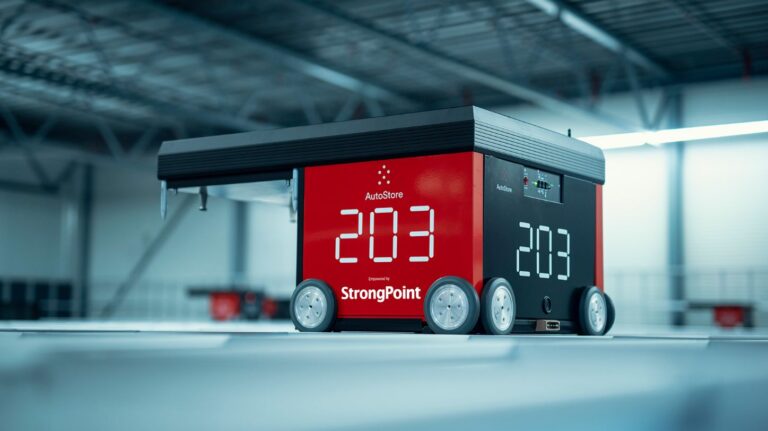By StrongPoint – AutoStore distribution partner in the UK & Ireland
Supply chain headaches have made it abundantly clear that the grocery retail industry simultaneously faces challenges and opportunities. Retailers now have to bend over backwards to meet consumer demands like rapid delivery, cheap or free last mile, and flawless service, which all comes at a significant cost. To do so, one must re-evaluate their processes in entirety, from logistics to last mile.
So how can a retailer meet these demands whilst maintaining profitability? Simple: automation.
Unfortunately, many retailers are hesitant to make large investments in a single system. The irony is that an automation solution is a lot more flexible than many think. In fact, to adapt to retailers’ changing needs, it has to be.
Think different. Think flexible.
Don’t picture a single, large, magical, singing-and-dancing piece of automation. Picture, rather, a suite of best-of breed-components orchestrated by industry-leading software. Then ask: How could my processes be automated, and what options will meet my current needs and adapt to the market’s ever-shifting whims?
It’s true that first-generation automation solutions seemed revolutionary and tried to do it all, but some of those now look like an incumbrance. Grid solutions, on the other hand, offer a modular approach tailored to every context and setup. No two grids are alike, nor should they be.
One of the defining characteristics of grocery retail is the sheer diversity of goods and products, not to mention customers’ demands. Globally, it’s perhaps the most diverse retail segment in terms of range of customer habits. With these unique demands comes a unique offer: flexibility.
You see, you can integrate an AutoStore grid into almost any space. That adaptability is essential to grocery retailers, who process orders in close proximation to their end-customers, meaning either in the store itself or at dedicated sites near their customer base, saving time and money.
That means you shouldn’t consider automation in isolation. Instead, you have to optimise the full end-to end-process.
Picking and moving
Modern robot arms can now pick and place even the most delicate grocery items. However, there will always be SKUs best picked manually, from commonly ordered goods to bulky items. Further, with low order volumes, it may not make sense to invest in robotics. Conversely, if your order volumes see dramatic fluctuations throughout the year, robotics can cover the base and augment the peaks.
But there are places where robotics or a hybrid approach excel.
It’s common to store items on traditional shelves or racking. A modern warehouse management system (WMS) will enable you to use multi-order, multi-zone picking with the most optimal route possible. However, consider automation here too. For example, automated mobile robots (AMRs) can bring certain shelves to the picker or picking area, depending on your context and setup, saving thousands of steps and human hours.
As well, goods have traditionally been transported manually to a dispatch area on dollies or cages or via conveyors. More recently though, autonomous mobile robots have become commercially viable. The optimal choice will depend on space, site layout, and the flexibility you need. You may also want to consider buffering and other tweaks.
Pick your technology, and your partners, wisely
When making your automation shopping list, don’t just settle on a single staple technology that you can survive off for the foreseeable future. That could set you down a narrow path and reduce your ability to adapt. There are a lot more choices and flexibility in automation than you might have ever known before. You just need the right partner for the job.
StrongPoint is a retail technology company that provides in-store and e-grocery hardware and software solutions. They are an AutoStore distribution partner in the UK, Ireland, and other European countries. StrongPoint is installing the world’s first AutoStore grid with a section for frozen items as well as chilled and ambient areas for a food distribution company.







